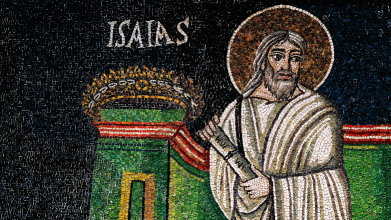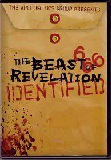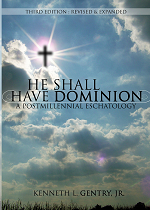INTRODUCING ISAIAH (1)
PMW 2023-094 by Kenneth L. Gentry, Jr.
Isaiah is one of the best-known, best-loved and most studied OT prophets. When opening a book of the Bible, it is always helpful to have at least a general understanding of several key issues. The Bible is an historical book dealing with real history. The more we know about its setting and issues, the better we can understand it. In this brief series I will introduce Isaiah.
TITLE
Technically, the title of this book is “The Vision of Isaiah,” as derived from its opening verse. This is actually confirmed by 2 Chronicles 32:32. That it is titled a “vision” is uncommon among the prophets, with Obadiah being the only other one using this word in his very opening (“the vision of Obadiah,” Oba. 1:1). Generally the prophets open with “the word(s) of” (e.g., Jer. 1:1; Eze. 1:3; Hos. 1:1; Joel 1:1; Amos 1:1).
As per virtually all prophetic books (except for Daniel), the prophet’s name appears in its opening verse (1:1; though Ezekiel’s name is delayed until his second verse). Isaiah is named for its author, whose Hebrew name as spelled in this title (v. 1a) is yesha’yah. This is how this name appears for other persons (1 Chron. 3:21; Ezra 8:17, 19; Neh. 11:7). In the New Testament Greek “Isaiah” is rendered Esaias and in the Latin Vulgate, Isaias. In the actual text of this prophetic book, however, it appears sixteen times and always in its longer form: yesha’yahu. Yet, the name by either spelling means “Yahweh is salvation.”

Greatness of the Great Commission (by Ken Gentry)
An insightful analysis of the full implications of the great commission. Impacts postmillennialism as well as the whole Christian worldview.
See more study materials at: www.KennethGentry.com
Based on the number of words in its original language, Isaiah is the sixth largest book in the Bible (with 25,608 Hebrew words). It ranks behind Jeremiah (33,002), Genesis (32,046), Psalms (30,147), Ezekiel (29,918), and Exodus (25,957). It is quoted in the Dead Sea Scrolls more than any other prophetic work, being third in the number of citations behind Psalms and Deuteronomy. The Hebrew text of Isaiah has been quite well preserved throughout the centuries. In fact, a complete Isaiah manuscript is found among the Dead Sea Scrolls showing an incredible agreement with the Masoretic Text over 1000 years later.
AUTHOR AND DATE
Determining the authorship and date of this book are two of the most hotly debated issues in all of biblical scholarship. The majority of modern critical scholars tend to identify either two (“Deutero-Isaiah”) or three (“Trito-Isaiah”) different authors for the main sections of the book. These supposed authors are spread over a 150-year period (see “Special Issues” below).
The earliest external tradition affirming Isaiah’s authorship is quite ancient. It comes from Ecclesiasticus 49:17–25 (a.k.a. Wisdom of Sirach), which was written between 200 and 180 BC. And this fits well with the book’s own internal evidence, for Isaiah 1:1 functions as the heading for the whole book, stating that it covers several reigns: “The vision of Isaiah the son of Amoz concerning Judah and Jerusalem, which he saw during the reigns of Uzziah, Jotham, Ahaz and Hezekiah, kings of Judah.”
We do not know to which tribe Isaiah belonged. He was, however, the son of (an otherwise unknown) “Amoz” (1:1; 2:1; 13:1 etc.; cp. 2 Kgs. 19:2, 20; 20:1; 2 Chron. 26:22; 32:20). This does not mean that he is the son of the prophet Amos. For that prophet’s name is spelled differently (both the first and last letters of the name are different in Hebrew). We also know that Isaiah was married to a “prophetess” (8:3) and was the father of at least two sons (7:3; 8:3).
Furthermore, according to 2 Chronicles, he was apparently the official chronicler of king Uzziah (2 Chron. 26:22). In fact, he had easy access to several kings (7:3; 8:2; 36:1–38:8; cp. 2 Kgs. 18:3–20–19) and was an especially close confidant of good king Hezekiah (Isa. 19:1–7; 36:1–39:8; cp. 2 Kgs. 20:1–19). As one who moved within the higher strata of Israelite society, we may discern that he was well-educated, as suggested by his vocabulary and style (especially in chs. 40–66).
 The Harrowing of Hell (by Jay Rogers)
The Harrowing of Hell (by Jay Rogers)
This postmillennial book examines the power of the Gospel, not only to overcome all opposition, but to rise far above the powers of hell. The term “Harrowing of Hell” refers to idea that Christ descended into Hell, as stated in the Apostles’ Creed.
For more Christian educational materials: www.KennethGentry.com
He was a contemporary of the prophets Hosea (755–715 BC) and Micah (735–700). His ministry covered a period of around sixty years (740–680), extending even into the reign (696–642) of Manasseh (37:37–38). His opening words expressly mention his ministering during the reigns of Uzziah (790–739), Jotham (750–31), Ahaz (735–15), and Hezekiah (715–686). This was an era of much political upheaval resulting from the rapid expansion of the Assyrian empire towards Israel, Judah and Israel’s own internal schisms and unfaithfulness to God, and the Assyrian destruction of the Northern Kingdom of Israel (722).
As a godly prophet, in 740 BC Isaiah was called by God in a vision of God seated on his throne in heaven (6:1–8). By this remarkable vision he was emboldened to minister to a doubting people (6:9) who even mocked him (5:19; 28:9–10). Jewish Talmudic tradition claims that he was martyred by being sawn in half while hiding in a hollow tree (cf. Yebamot 49b in the Talmud). This information is also found in two Christian texts (Martyrdom of Isaiah 1:9–10 and Lives of the Prophets 1:1), and may be indicated by the statement in Hebrews 11:37. His last public appearance was in 705 BC during the invasion of the Assyrian king Sennacherib (Isa. 36:1; cp. 2 Kgs. 18:13; 19:20).
Isaiah did, however, have devoted disciples (8:16). His prophetic writings are basically an anthology of his prophecies, as we may discern from their not being in chronological order. They could well have been organized and published by his disciples. In fact, according to the Jewish Talmud in Baba Bathra 15a, Hezekiah and company edited and published Isaiah’s prophecies.
Click on the following images for more information on these studies:



Kenneth L. Gentry Jr.'s Blog
- Kenneth L. Gentry Jr.'s profile
- 85 followers



